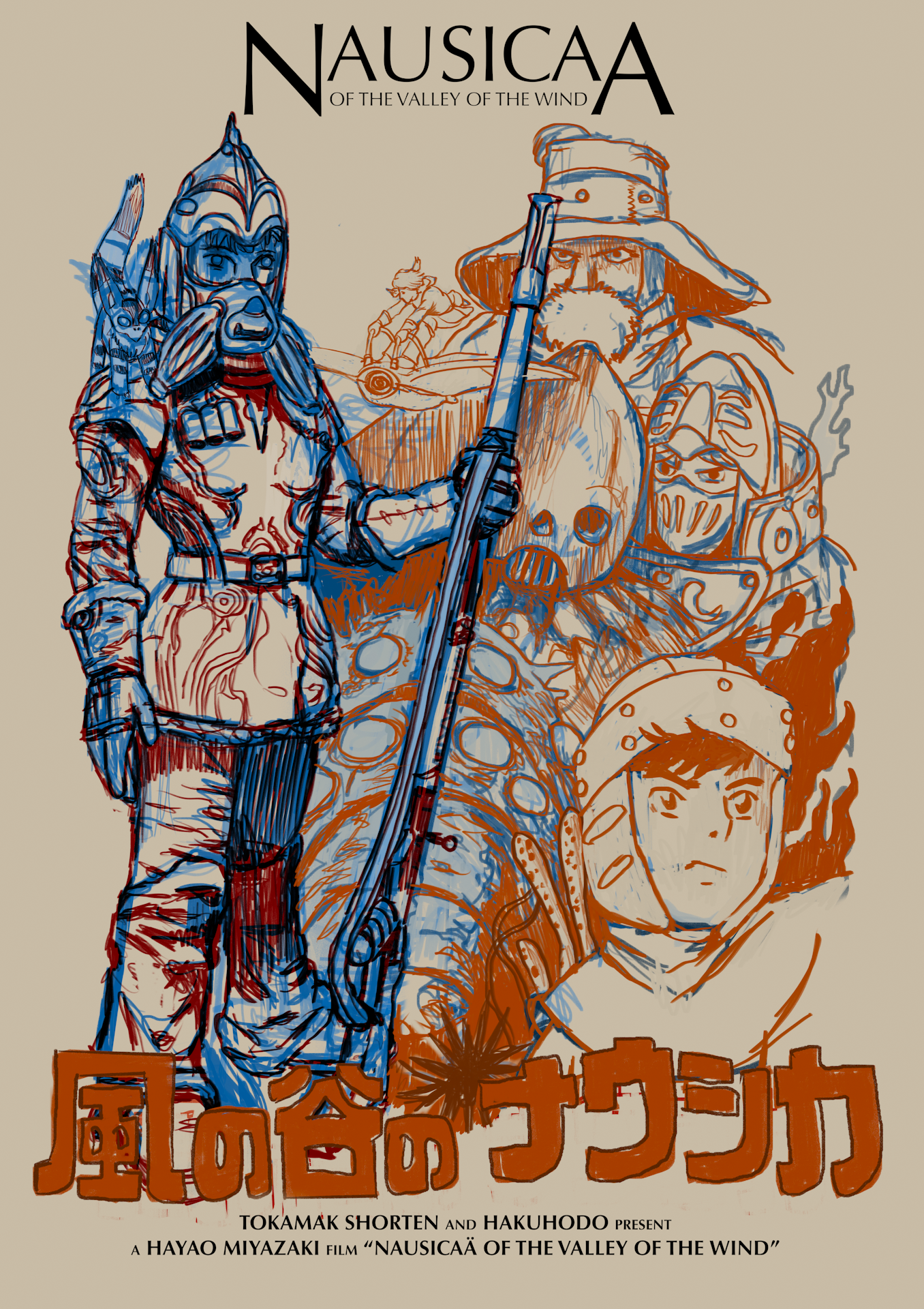Note: This is a work-in-progress sketch — not the final piece. I’m sharing it now to offer insight into the creative process and how these ideas are taking shape.
Few animated films leave as deep an imprint as Hayao Miyazaki’s 1984 masterpiece Nausicaä of the Valley of the Wind. Long before Studio Ghibli was officially founded, Miyazaki poured his ecological anxieties, fascination with flight, and complex moral vision into this hand-drawn epic. While many fans know the broad strokes of the story, there are plenty of lesser-known details that make revisiting the film endlessly rewarding.
Fascinating Facts Behind the Valley
Origins in Manga
The film is adapted from Miyazaki’s own manga, serialized in Animage magazine starting in 1982. The manga ran until 1994, giving far more depth to its world than the film could cover in two hours.
The Real “Birth” of Studio Ghibli
Although the studio didn’t officially exist yet, the success of Nausicaä was so pivotal that Tokuma Shoten used the profits to launch Studio Ghibli the following year.
Invented Ecology
Miyazaki designed a fully imagined toxic jungle, complete with invented spores, insect species, and delicate ecosystems—drawing inspiration from real-world mycology and entomology.
Complex Morality
Unlike typical good-versus-evil tales, the film blurs lines. The Ohmu, for example, appear terrifying yet are fundamentally protectors of nature.
Mechanical Inspirations
Nausicaä’s signature glider, the Mehve, is loosely inspired by early German gliders and Miyazaki’s lifelong obsession with human flight.
Voice Actor Legacy
Sumi Shimamoto, who voiced Nausicaä, was chosen partly for her calm, empathetic tone—qualities that defined the character’s leadership.
From History to Design: Why I’m Reimagining the Poster
When approaching this redesign, I wanted the artwork to echo both the film’s meditative tone and its undercurrent of tension. Nausicaä is a figure of empathy, but she is also a warrior prepared to defend her world. That duality guided my composition.
Note: This is a work-in-progress sketch — not the final piece. I’m sharing it now to offer insight into the creative process and how these ideas are taking shape.
Left Focus: Nausicaä Standing with Purpose
Nausicaä stands firmly on the left, helmet and air mask on, rifle in hand. The butt of the rifle rests on the ground—a grounded, powerful stance that conveys poise and quiet readiness. She is at rest, but alert. A protector, not a destroyer.
Right Montage: Characters in the Balance
On the right side, I created a vertical montage that starts with Lord Yupa at the top—a seasoned swordsman and Nausicaä’s guide. Below him, the Empress (Kushana) represents political conflict and complex leadership. Finally, at the base, the boy Asbel symbolizes hope, youth, and resilience. Their descending placement forms a visual narrative of tension, authority, and compassion.
Flight and Freedom
Alongside the montage, Nausicaä appears again—this time airborne on her glider. It contrasts with her grounded figure on the left, suggesting movement, change, and freedom. The two versions of her reflect the film’s core themes: harmony and action, grounded wisdom and skyward courage.
Color & Atmosphere
While the final palette is still evolving, I’m exploring muted earth tones with touches of turquoise and gold to echo the Valley’s beauty and the reverence Miyazaki holds for natural life—even in dystopia.
Why This Matters
A poster isn’t just a promotional piece—it’s a distilled emotion, a tribute, and an entry point to a beloved story. This redesign (still in progress) is a way of honoring Nausicaä’s timeless spirit: a reminder that bravery and empathy are not opposites, but twin engines of survival. The film’s environmental warnings and human questions still resonate deeply—perhaps more now than ever.
Stay tuned for the final version in the coming weeks. I’d love to hear your thoughts on the direction so far.

Note: This is a work-in-progress sketch — not the final piece. I’m sharing it now to offer insight into the creative process and how these ideas are taking shape.

0 comments